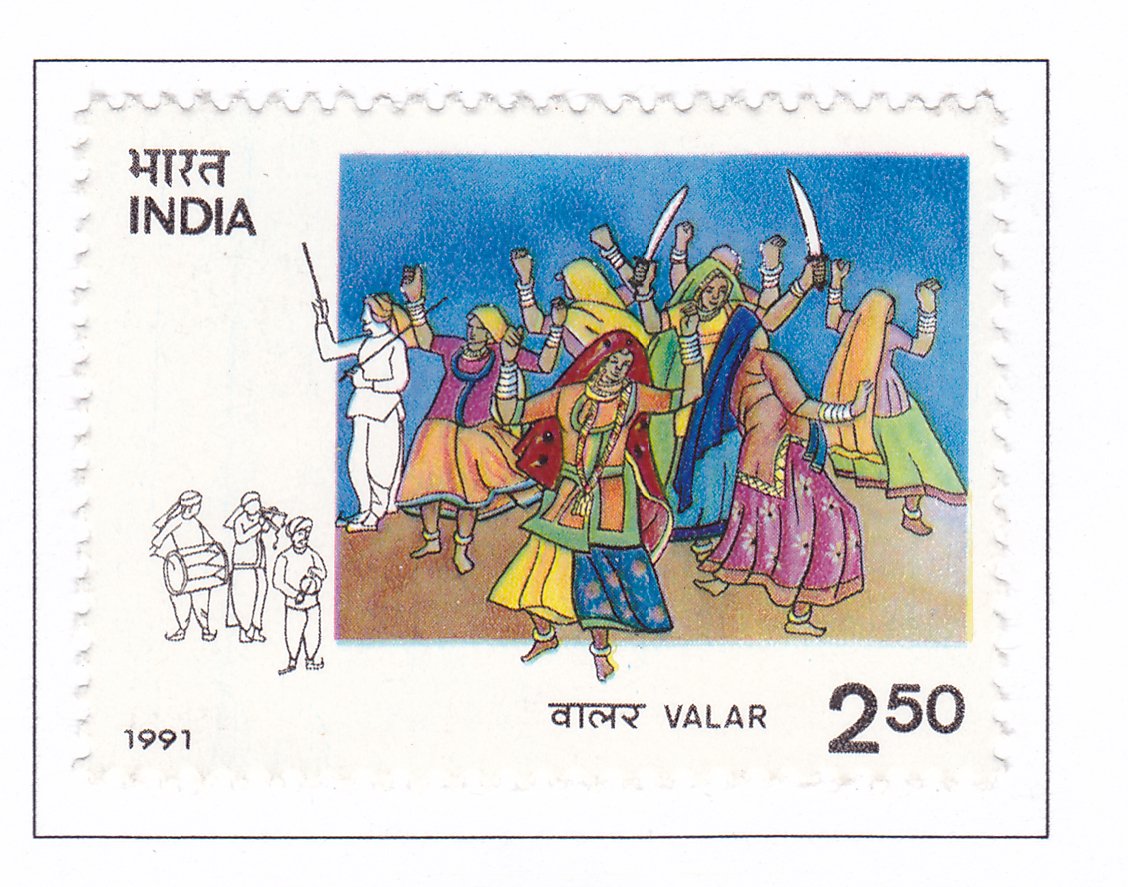Tribal Dance: Valar

Technical Data
| Stamp Set | Tribal Dance |
|---|---|
| Date of Issue | April 30, 1991 |
| Denomination | Rs. 2.50 |
| Quantity | 1,000,000 |
| Perforation | comb 13½ x 13 |
| Printer | Security Printing Press, Nashik |
| Watermark | No Watermark |
| Colors | Multicolor |
| Catalog Codes |
Michel IN 1298 Stamp Number IN 1355 Yvert et Tellier IN 1096 Stanley Gibbons IN 1448 |
| Themes | Dance | Folklore | Suits and Costumes |
Commemorative Stamp Set: Tribal Dances of India
Design Elements:
The stamps feature symbolic representations of tribal dances from four regions of India: Reangs of Tripura (East), Garasias of Rajasthan (West), Kinners of Himachal Pradesh (North), and Kundividians and Nairs of Kerala (South). Each stamp showcases the unique costumes, gestures, and cultural elements of these tribal dances.
Cultural and Historical Significance:
Tribal dances in India are integral to the rich cultural heritage of the country. They represent centuries-old traditions and customs, reflecting the diverse cultural tapestry of India’s hinterland. Despite modern influences, these dances have preserved the distinct identities and mores of various tribal communities.
Usage:
The stamps serve to celebrate and recognize the artistic expressions of tribal dances, promoting awareness and appreciation of India’s tribal cultures. They are intended for postage, collectors’ items, and educational purposes.
Importance of the Commemorative Stamp Set:
This set of stamps highlights the significant contributions of tribal dances to India’s cultural diversity and heritage. It aims to showcase the beauty, artistry, and cultural richness embedded in these traditional dance forms.
Example of the Stamp Design:
Each stamp could depict:
- Traditional costumes and ornaments worn during the dances.
- Dynamic poses and movements characteristic of each dance form.
- Symbolic elements representing nature, rituals, or cultural motifs associated with the tribes.
Significance:
The stamps symbolize the resilience of India’s tribal communities in preserving their cultural heritage through expressive arts like dance, contributing to the broader narrative of India’s cultural identity.
